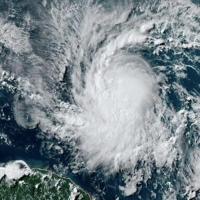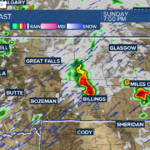Beryl has developed into the first hurricane of the 2024 Atlantic season, causing concern in the southeast Caribbean as it is expected to become a major storm soon. The US National Hurricane Center (NHC) stated that Beryl, currently located in the Atlantic Ocean about 720 miles east of Barbados, will intensify into a “dangerous major hurricane” before it reaches the Windward Islands by late Sunday or Monday.
Barbados has been placed under a hurricane warning, while other areas like St Lucia, St Vincent and the Grenadines, and Grenada are under hurricane watches, according to the latest advisory from the NHC.
In Bridgetown, Barbados, residents are preparing for the storm with lines at gas stations and crowded supermarkets as people stock up on supplies. A major hurricane is classified as Category 3 or higher on the Saffir-Simpson scale, with winds reaching at least 111 miles per hour.
The early formation of such a powerful storm in the Atlantic hurricane season, which typically runs from June to November, is quite rare. Hurricane expert Michael Lowry noted that only five major hurricanes have ever been recorded in the Atlantic before the first week of July, and Beryl could potentially be the sixth, marking an early occurrence in the tropical Atlantic.
The NHC reported on Saturday that Beryl’s maximum sustained winds have increased to around 75 miles per hour, with stronger gusts. Hurricane conditions are expected in the warning area starting from Sunday night, with potential heavy rain, flooding, and life-threatening winds and storm surge.
The NOAA has predicted an “extraordinary” hurricane season this year, with up to seven storms reaching Category 3 or higher. Warmer Atlantic ocean temperatures and La Nina conditions in the Pacific are cited as factors contributing to the increase in storms.
Experts have noted that extreme weather events, including hurricanes, have been on the rise and more severe due to the effects of climate change.
bur-st-mlm/des





